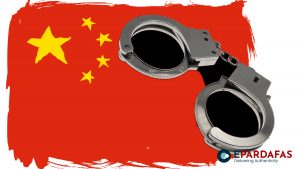
Monsoon Rains Arrive Early in Kerala, Offering Relief and Boosting Agricultural Prospects
Monsoon rains hit the coast of India’s southernmost state of Kerala on Thursday, arriving two days sooner than expected, according to weather officials. This early onset provides a welcome respite from a severe heat wave and raises hopes for a bumper harvest season.
The summer monsoon, which is essential for economic growth in Asia’s third-largest economy, typically begins in Kerala around June 1 and spreads across the country by mid-July. This seasonal rain allows farmers to plant key crops such as rice, corn, cotton, soybeans, and sugarcane.
The India Meteorological Department (IMD) reported that the monsoon has already covered nearly all of Kerala and most northeastern states. Conditions are favorable for the rain to extend into the neighboring states of Tamil Nadu and Karnataka, as well as the northeastern state of Assam, over the next two to three days.
This development offers much-needed relief from a stifling heat wave that has seen temperatures soar above 50 degrees Celsius (122 degrees Fahrenheit) in some northern and western regions of India.
The monsoon is crucial for India’s nearly $3.5-trillion economy, delivering about 70% of the rain required to irrigate farms, recharge reservoirs, and replenish aquifers. With nearly half of India’s farmland relying on these annual rains due to lack of irrigation, the monsoon’s arrival is vital for the country’s agriculture. India stands as the world’s second-largest producer of rice, wheat, and sugar, and the monsoon typically spans from June to September.
For June, India is expected to receive an average amount of rainfall, though temperatures are likely to remain higher than normal, according to the IMD. The monsoon rainfall this year is anticipated to be 106% of the long-term average.
In 2023, below-average rainfall led to depleted reservoirs and reduced food production, prompting the government to restrict exports of commodities like rice, wheat, sugar, and onions. The resumption of exports will depend on how quickly production recovers in 2024, which hinges on the abundance of the monsoon. An ample monsoon season could also help control food inflation, a significant concern for the central bank.
Additionally, the La Nina weather phenomenon, known to increase rainfall in India, is expected to occur between July and September, further boosting the prospects for a good monsoon season.
- Kaski Court Grants Bail to Rabi Lamichhane in Embezzlement Case
- Upper Mustang Sees Over 4,000 Foreign Tourists in 2024, Marking a 14% Rise
- Hollywood Wildfires Ravage Los Angeles, Claiming Lives and Thousands of Homes
- Nepal Deports 147 Chinese Nationals in 2024 Amid Rising Concerns Over Crimes and Overstays













Comments